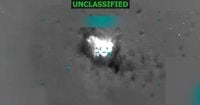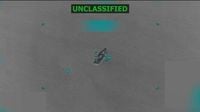The Caribbean Sea, long a crossroads for commerce and clandestine activities alike, has become the unlikely stage for one of the most controversial U.S. military campaigns in recent memory. Since early September 2025, a series of U.S. strikes on boats suspected of narcotics trafficking has left at least 27 people dead, ignited fierce debate in Washington, and sent shockwaves through Latin America and the Caribbean. The Trump administration, citing the urgent need to stem the flow of drugs into the United States, has justified these actions as a necessary escalation. But critics—at home and abroad—are raising pointed questions about legality, transparency, and the broader implications for international relations.
On October 14, 2025, President Donald Trump announced via Truth Social that U.S. forces had struck a small boat off the Venezuelan coast, killing six men. According to the President, intelligence confirmed the vessel was trafficking narcotics and was associated with illicit narcoterrorist networks, transiting a known Designated Terrorist Organization (DTO) route. This marked the fifth such strike since September, all targeting vessels accused by the administration of carrying narcotics bound for America. Secretary of War Pete Hegseth echoed Trump’s claims, posting grainy footage of the attack on social media and asserting, “The strike was conducted in international waters just off the coast of Venezuela while the vessel was transporting substantial amounts of narcotics—headed to America to poison our people.”
These actions are part of a broader military buildup in the region. Trump has deployed eight warships, a nuclear-powered submarine, and fighter jets to the Caribbean, framing the operation as a bold effort to combat drug smuggling into the United States. The administration has gone so far as to designate gangs, including Venezuela’s notorious Tren de Aragua, as foreign terrorist organizations. The President claimed that the cartel operates directly under Venezuelan President Nicolas Maduro, whom the U.S. Justice Department has targeted with a $50 million bounty for information leading to his capture—a figure doubled in August 2025.
Yet for all the administration’s public justifications, evidence supporting the claims about these vessels remains elusive. The Pentagon has yet to provide concrete proof that the boats carried narcotics or were linked to terrorist organizations in any of the five strikes. Legal experts and human rights groups have sounded the alarm, arguing that the attacks may violate both U.S. and international law. Senator Rand Paul, a Republican from Kentucky, has openly challenged the administration’s approach, asking, “If all of the boats that were struck in the Caribbean had drug dealers on them, then what were their names and what was the evidence linking them to being part of a gang?” Paul emphasized that the U.S. Coast Guard, when interdicting suspected drug boats, finds no contraband about 25% of the time—“but they don’t kill them.” He added, “We will board your boat. If they don’t halt and stop, there’s an escalation of use of force, but we don’t just blow ships up.”
Democratic lawmakers have also weighed in, with Rep. Jim Himes of Connecticut calling the strikes “illegal killings” and the Senate narrowly failing to pass a war powers resolution that would have required Congressional authorization for such military actions. Frustration is mounting on both sides of the aisle, with multiple members of Congress expressing dissatisfaction with the administration’s briefings and the refusal of Pentagon officials to provide unedited video footage of the incidents.
The controversy isn’t confined to the United States. In Venezuela, President Maduro responded to the latest strike by ordering military exercises in the country’s largest shantytowns and mobilizing the military, police, and civilian militias to defend “mountains, coasts, schools, hospitals, factories and markets.” Maduro, who is widely believed to have stolen last year’s presidential election, accused Washington of plotting regime change. State television broadcast images of armored vehicles deploying in the Caracas suburb of Petare, a traditional stronghold of socialist support, and military maneuvers were extended to Miranda state. Maduro declared the deployments were to “win the peace.”
The regional impact of the U.S. campaign has been profound. At least one of the strikes, on September 19, targeted a boat that had left Colombia and was suspected of carrying Colombians affiliated with terrorist organizations, according to Pentagon-briefed sources. Colombian President Gustavo Petro reacted sharply, suggesting on X (formerly Twitter) that if the boat was sunk in Dominican waters, “then it is possible that they were Colombians. This means that officials from the US and the Dominican Republic would be guilty of the murder of Colombian citizens.” The White House denied Petro’s claims and called for a public retraction, but the episode highlighted the widening scope of the campaign and its diplomatic fallout.
The Trump administration’s legal rationale for these strikes is rooted in a classified opinion that allows for the designation of drug traffickers as enemy combatants—effectively granting the president authority to order lethal strikes without judicial review. Historically, those involved in drug trafficking were considered criminals entitled to due process, with the Coast Guard interdicting vessels and arresting suspects. Now, as White House spokesperson Anna Kelly put it, “the President will continue to use every element of American power to stop drugs from flooding into our country and to bring those responsible to justice.”
The practical effects of the campaign are mixed. In the Dominican Republic, where a U.S. strike near the southern shore last month killed three people and scattered more than 375 packages of cocaine into the sea, authorities have seized nearly 19,000 kilos of drugs at sea since January—a record-setting year even before the arrival of U.S. warships. Yet experts caution that the Caribbean, while an important hub for Colombian cocaine, is not the main route for drugs entering the United States. U.S. and United Nations data show that most maritime drug trafficking bound for America actually occurs in the Pacific, and none of the deadly fentanyl responsible for thousands of U.S. overdoses is trafficked through the Caribbean.
Nonetheless, the Caribbean remains a vital corridor for smuggling, with traffickers adapting to increased enforcement by shifting tactics—using smaller loads, covert shipments in food containers, and even dropping bales of drugs from planes to be picked up by larger vessels. The presence of U.S. warships has, in some locales, driven traffickers to new methods, but experts like Alberto Arean Varela of the U.N. Office on Drugs and Crime warn that the market is simply too lucrative to be halted by military means alone. “There is an overproduction of cocaine in the producing countries,” he noted. “There’s more to smuggle.”
Amid the escalating tensions, the Nobel Peace Prize was awarded on October 10 to María Corina Machado, a prominent opposition leader recognized for her peaceful resistance to Maduro’s 12-year rule. The honor, which Trump himself had lobbied for, underscored the international community’s focus on Venezuela’s political crisis—an issue now inextricably linked with the debate over U.S. military action in the region.
As the U.S. campaign continues, its legality, effectiveness, and broader consequences remain hotly debated. What’s clear is that, in the battle for control over the Caribbean’s shadowy waters, the stakes are higher—and the questions more urgent—than ever.


